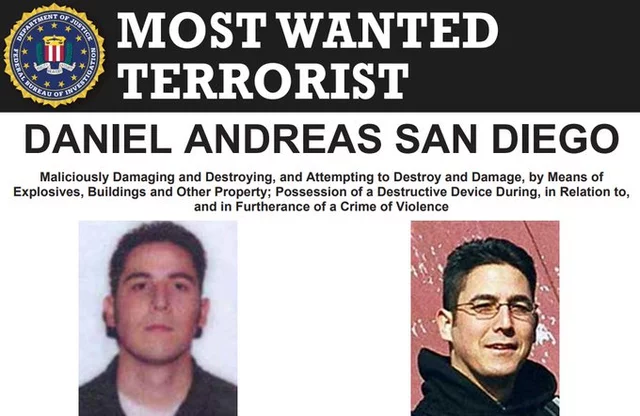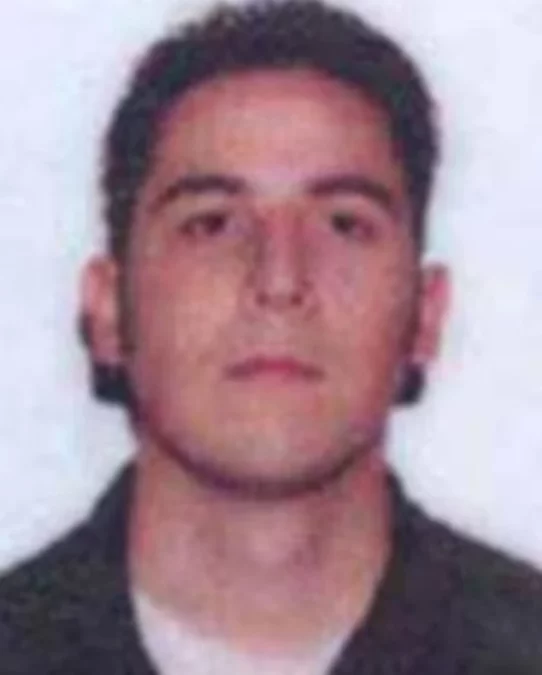America’s most wanted man found after 21 years in hiding
A suspected double bomber on the FBI’s most wanted
list who vanished for 21 years is due in court this week to decide if he will be sent back to the United States to face trial.
The FBI believe Daniel Andreas San Diego has links to animal rights extremist groups and is their prime suspect for a series of bombings in the San Francisco Bay Area in 2003.
Former FBI agents have said there were “missed opportunities” to arrest the 47-year-old before he vanished and claim they found a suspected “bomb-making factory” in his abandoned car after what detectives called a 65-mile (104km) rush-hour chase in California.
San Diego was found 5,000 miles (8,000km) away in a cottage in north Wales last year.
San Diego, who had a Ksh32 million bounty on his head, faces a five-day extradition hearing at Westminster Magistrates Court in London on Monday to find out if the UK will hand him over to the United States to answer a federal arrest warrant.
The former fugitive, the first born-and-raised American on the FBI’s most wanted terrorist list, has been indicted by US prosecutors for maliciously damaging and destroying by means of an explosive after two separate attacks in 2003.
Animal rights extremist group Revolutionary Cells – Animal Liberation Brigade claimed responsibility for the attacks on firms they believed had links with organisations that tested products on animals.
Former FBI Special Agent David Smith was part of a special operations group that had been watching San Diego.
“He was remarkable by being unremarkable,” Mr Smith, one of the bureau’s top surveillance experts, told the BBC.

Smith and his former colleague Clyde Foreman, a former supervisory special agent, recall urging their colleagues to make the arrest once he had been identified as the main suspect.
Black, an agent of 27 years, added: “As good as you can be, the longer you maintain surveillance, eventually they’re going to notice something unusual and get spooked.
“There was frustration they weren’t given the green light to arrest him as they said there is potential if he leaves, he’s going to be able to detonate additional bombs.”
The day before San Diego went off the FBI’s radar, Smith was hiding in camouflage outside his home.
Hours after Smith and the FBI’s surveillance specialists went off shift, he said San Diego made a run for it with detectives in pursuit.
“Almost from the time he came out of his house, he was acting frantically,” recalled Smith.
“His driving patterns changed. Where he was going, he was driving erratically, which is typical of someone trying to evade surveillance.”
Agents said he drove south from his home in Sebastopol, Sonoma County, weaved past commuters, through tunnels and over toll bridges in an hour-long motorway chase that ended in downtown San Francisco.
Not even the FBI’s spy planes could keep eyes on their target as San Francisco’s infamous fog blocked their view and San Diego slipped the net.
Mr San Diego left his car with the engine still running at a busy city centre junction next to a subway station, and wasn’t seen again.

“The team that followed him were thinking he parked the car and went a few blocks up the street to a location nearby, either known to the animal rights group or he had a connection with,” recalled Mr Smith, an FBI agent of 33 years.
The double bombing came two years after the 9/11 attacks, and the US was on high alert, so department chief Foreman was of the view: “Once you have somebody identified, arrest him.”
San Diego was a computer network specialist born in Berkeley, California, and brought up in an upper-middle-class area of the San Francisco Bay Area. His father was a city manager.
The FBI worked on tracking San Diego for years after his disappearance, watching family and friends to see if they could lead agents to him. But the scent went cold. They believed he had probably fled to central or South America.
Mr San Diego was indicted in the US District Court in 2004, and the FBI considered him armed and dangerous.
Then, after 21 years of nothing and both Mr Smith and Mr Foreman retiring from the bureau, they heard one of their most notorious fugitives had been detained in the UK after being found in an isolated cottage on a north Wales hillside.
The UK’s National Crime Agency (NCA) and counter-terror police swooped in November 2024, arresting San Diego who had been using the alias Danny Webb in the Conwy valley, near the market town of Llanrwst.
The FBI said it would not comment about the possible missed opportunities to arrest San Diego.
But at the time of his arrest, FBI Director Christopher Wray said: “Daniel San Diego’s arrest after more than 20 years as a fugitive for two bombings in the San Francisco area shows that no matter how long it takes, the FBI will find you and hold you accountable.”
San Diego, who is being held at the high-security Belmarsh Prison in London, has declined to comment.
- Uganda Civil Aviation Authority Sucessfully Hosts ICAO–CANSO SWIM And FF-ICE Meet In Entebbe - December 8, 2025
- From a simple smartphone to nearly 2.5m followers: Dr. Kimera inspires Kapchorwa youths to use digital platforms for income generation and business growth - December 8, 2025
- AFRAA Marks New Era of African Aviation as Free Route Airspace Takes Flight in West and Central Africa - December 8, 2025












